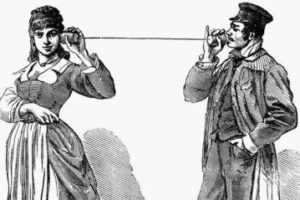We have all spent more time in our kitchens in the past year, which can be a good thing or too much of a good thing. I’ve come to appreciate that satisfying meals can be made with a limited number of ingredients; no fancy equipment or mad chef-y skills required. So, too, do I appreciate the music and arts educators who have created meaningful learning with the basic ingredients of making music, all the while becoming social and emotional support systems for their students.
The move to full in-person instruction raises a raft of new questions, including health, safety and mental health issues. A chief concern is that students may not be returning to arts classes, music in particular. Programs that were robust in pre-pandemic years may have only a fraction of returning students, and new students may be hard to reach.
It’s a chicken and egg problem. Programs may be threatened due to declining enrollment and declining enrollment may be due to program cuts.
Back to Basics
 Recruitment and retention strategies for students have long relied on the personal outreach of middle and high school music educators. Band directors are pied pipers, attracting new students with an array of high-touch marketing tactics. In this new, new normal, it may be time to return to basics, to look at recruitment through the lens of the students. It’s important to remember why students choose music in the first place and what obstacles may stand in the way to their participation.
Recruitment and retention strategies for students have long relied on the personal outreach of middle and high school music educators. Band directors are pied pipers, attracting new students with an array of high-touch marketing tactics. In this new, new normal, it may be time to return to basics, to look at recruitment through the lens of the students. It’s important to remember why students choose music in the first place and what obstacles may stand in the way to their participation.
Influencers
A research study conducted in Nashville schools’ Music Makes Us initiative in 2015 found that “parents, family members, friends, and teachers are a big influence on students’ decisions to enter into and/or continue with music. These influencers usually offered support for music participation …” (Powell Russell, 2015.)
Social media has co-opted (and monetized) the term “influencers” in today’s world. But there is no denying the influence of peers. A peer-to-peer campaign to reach potential music students could have immediate and long-term benefits.
Belonging
 Students talk about the bonding aspect of participating in music ensembles, the comfort and sense of belonging they feel. As one 12th grader said, “Because I know at the end of the day, I’ll always be able to come back with my orchestra friends, like the ones who understand the weird quirks of being in orchestra, because you’ve got to be a little strange to want to be in orchestra!” (ibid, p. 10)
Students talk about the bonding aspect of participating in music ensembles, the comfort and sense of belonging they feel. As one 12th grader said, “Because I know at the end of the day, I’ll always be able to come back with my orchestra friends, like the ones who understand the weird quirks of being in orchestra, because you’ve got to be a little strange to want to be in orchestra!” (ibid, p. 10)
Recruitment strategies that play to this strength will have great appeal to students, especially during a period when students are feeling tentative about a return to school and their place in the social hierarchy.
Benefits
 In the above-referenced study, music mindset was defined for the study, measuring the extent to which students believe that music attendance affects their school attendance, learning beyond music, and peer relationships. The music mindset is strongest among students who have had middle and high school music, 12th grade students, and students who have had more than one year of music in high school. (ibid, pp. 8-9.)
In the above-referenced study, music mindset was defined for the study, measuring the extent to which students believe that music attendance affects their school attendance, learning beyond music, and peer relationships. The music mindset is strongest among students who have had middle and high school music, 12th grade students, and students who have had more than one year of music in high school. (ibid, pp. 8-9.)
In addition, the four highest ranking life benefits stated by music students are:
- Perseverance
- Patience
- Dedication
- Teamwork
Prospective students and families may be persuaded by these benefits if they are uncertain about committing to music.
Obstacles
In the 2015 study, “Many students desired to do music, but were hindered because of other requirements, scheduling conflicts, lack of communication with administration, not knowing how to join, or losing interest in music because the program/teachers were not strong, effective, enjoyable, etc.” (ibid, p.10)
 When asked what school districts can do to help more students stay in music, top responses by students included:
When asked what school districts can do to help more students stay in music, top responses by students included:
- Improve scheduling constraints on electives
- High quality instruments
- High quality teachers
- Offer more classes and sections; make the course titles more descriptive
- Broader variety of music
Frank Zimmerer, director of bands at Antioch High School in Metro Nashville Public Schools, sees value in addressing students’ needs beyond music. And he’s optimistic about the future:
Next year is more uncertain than 2020. We’ve had so many students who need emotional support. Trying to work on music/band has taken a back seat at times. The family bond and the trust we have built with our students has grown stronger in ways we could not have imagined. Students’ families have been sick, have lost jobs; they’ve been called upon to work themselves. Of course, we are extremely worried about the band next year, whether or not all of our 8th graders will join, and if our virtual students will stick around after more than a year’s absence from the band room. We preach optimism and forward thinking. We’ll be ok.
Understanding the basics of what students want/need and how music educators are addressing those needs, the question becomes: Will school administrators have the requisite patience and fortitude to give music and arts programs enough time to recover? I’m betting on all the Franks out there. Given time, we’ll be more than ok.
For more resources on student recruitment, see Yamaha Educators Suite Post-Pandemic Planning Guide and Music Achievement Council’s Practical Guide to Recruitment and Retention.
Citation: Powell Russell, D. L. (2015). Interlude dashboard report: Update on the implementation and impact of Music Makes Us® in Metro Nashville Public Schools. Nashville, TN: Metro Nashville Public Schools.
Article to appear in SBO Magazine in May 2021.
Feature Photo by Toa Heftiba





